Frenotomy for tongue-tie in newborn infants
- PMID: 28284020
- PMCID: PMC6464654
- DOI: 10.1002/14651858.CD011065.pub2
Frenotomy for tongue-tie in newborn infants
Abstract
Background: Tongue-tie, or ankyloglossia, is a condition whereby the lingual frenulum attaches near the tip of the tongue and may be short, tight and thick. Tongue-tie is present in 4% to 11% of newborns. Tongue-tie has been cited as a cause of poor breastfeeding and maternal nipple pain. Frenotomy, which is commonly performed, may correct the restriction to tongue movement and allow more effective breastfeeding with less maternal nipple pain.
Objectives: To determine whether frenotomy is safe and effective in improving ability to feed orally among infants younger than three months of age with tongue-tie (and problems feeding).Also, to perform subgroup analysis to determine the following.• Severity of tongue-tie before frenotomy as measured by a validated tool (e.g. Hazelbaker Assessment Tool for Lingual Frenulum Function (ATLFF) scores < 11; scores ≥ 11) (Hazelbaker 1993).• Gestational age at birth (< 37 weeks' gestation; 37 weeks' gestation and above).• Method of feeding (breast or bottle).• Age at frenotomy (≤ 10 days of age; > 10 days to three months of age).• Severity of feeding difficulty (infants with feeding difficulty affecting weight gain (as assessed by infant's not regaining birth weight by day 14 or falling off centiles); infants with symptomatic feeding difficulty but thriving (greater than birth weight by day 14 and tracking centiles).
Search methods: We searched the Cochrane Central Register of Controlled Trials (CENTRAL), MEDLINE, Embase and CINAHL up to January 2017, as well as previous reviews including cross-references, expert informants and journal handsearching. We searched clinical trials databases for ongoing and recently completed trials. We applied no language restrictions.
Selection criteria: Randomised, quasi-randomised controlled trials or cluster-randomised trials that compared frenotomy versus no frenotomy or frenotomy versus sham procedure in newborn infants.
Data collection and analysis: Review authors extracted from the reports of clinical trials data regarding clinical outcomes including infant feeding, maternal nipple pain, duration of breastfeeding, cessation of breastfeeding, infant pain, excessive bleeding, infection at the site of frenotomy, ulceration at the site of frenotomy, damage to the tongue and/or submandibular ducts and recurrence of tongue-tie. We used the GRADE approach to assess the quality of evidence.
Main results: Five randomised trials met our inclusion criteria (n = 302). Three studies objectively measured infant breastfeeding using standardised assessment tools. Pooled analysis of two studies (n = 155) showed no change on a 10-point feeding scale following frenotomy (mean difference (MD) -0.1, 95% confidence interval (CI) -0.6 to 0.5 units on a 10-point feeding scale). A third study (n = 58) showed objective improvement on a 12-point feeding scale (MD 3.5, 95% CI 3.1 to 4.0 units of a 12-point feeding scale). Four studies objectively assessed maternal pain. Pooled analysis of three studies (n = 212) based on a 10-point pain scale showed a reduction in maternal pain scores following frenotomy (MD -0.7, 95% CI -1.4 to -0.1 units on a 10-point pain scale). A fourth study (n = 58) also showed a reduction in pain scores on a 50-point pain scale (MD -8.6, 95% CI -9.4 to -7.8 units on a 50-point pain scale). All studies reported no adverse effects following frenotomy. These studies had serious methodological shortcomings. They included small sample sizes, and only two studies blinded both mothers and assessors; one did not attempt blinding for mothers nor for assessors. All studies offered frenotomy to controls, and most controls underwent the procedure, suggesting lack of equipoise. No study was able to report whether frenotomy led to long-term successful breastfeeding.
Authors' conclusions: Frenotomy reduced breastfeeding mothers' nipple pain in the short term. Investigators did not find a consistent positive effect on infant breastfeeding. Researchers reported no serious complications, but the total number of infants studied was small. The small number of trials along with methodological shortcomings limits the certainty of these findings. Further randomised controlled trials of high methodological quality are necessary to determine the effects of frenotomy.
Conflict of interest statement
None declared.
Figures


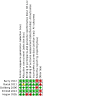
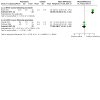
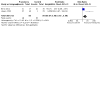


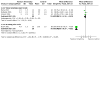
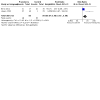
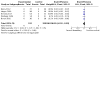
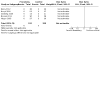
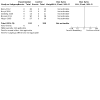
Comment in
-
Commentary on "Frenotomy for Tongue-Tie in Newborn Infants".Neonatology. 2020;117(1):1-3. doi: 10.1159/000495317. Epub 2019 May 21. Neonatology. 2020. PMID: 31112986 No abstract available.
References
References to studies included in this review
Berry 2012 {published data only}
-
- Berry J, Griffiths M, Westcott C. A double-blind, randomized, controlled trial of tongue-tie division and its immediate effect on breastfeeding. Breastfeeding Medicine 2012;7(3):189-93. [PMID: ] - PubMed
Buryk 2011 {published data only}
-
- Buryk M, Bloom D, Shope T. Efficacy of neonatal release of ankyloglossia. Pediatrics 2011;128(2):280-8. [PMID: ] - PubMed
Dollberg 2006 {published and unpublished data}
-
- Dollberg S, Botzer E, Grunis E, Mimouni FB. Immediate nipple pain relief after frenotomy in breast-fed infants with ankyloglossia: a randomized, prospective study. Journal of Pediatric Surgery 2006;41(9):1598-1600. [PMID: ] - PubMed
Emond 2013 {published data only}
Hogan 2005 {published data only}
-
- Hogan M, Westcott C, Griffiths M. Randomized, controlled trial of division of tongue-tie in infants with feeding problems. Journal of Paediatrics and Child Health 2005;41(5-6):246-50. [PMID: ] - PubMed
References to studies excluded from this review
Ngerncham 2013 {published data only}
-
- Ngerncham S, Laohapensang M, Wongvisutdhi T, Ritjaroen Y, Painpichan N, et al. Lingual frenulum and effect on breastfeeding in Thai newborn infants. Paediatrics and International Child Health 2013;33(2):86-90. [PMID: ] - PubMed
References to ongoing studies
Ricalde 2017 {published data only}
-
- Ricalde P. Prospective Evaluation of Lingual Frenotomy in Newborns With Simultaneous Lip Tie for the Relief of Breastfeeding Pain. ClinicalTrials.gov.
Additional references
Algar 2009
-
- Algar V. Question 2. Should an infant who is breastfeeding poorly and has a tongue tie undergo a tongue tie division? Archives of Disease in Childhood 2009;94(11):911-2. [PMID: ] - PubMed
Amir 2006
Bowley 2014
-
- Bowley DM, Arul GS. Fifteen-minute consultation: the infant with a tongue tie. Archives of Disease in Childhood. Education and Practice Edition 2014;99(4):127–9. [PMID: ] - PubMed
CADTH 2016
-
- Canadian Agency for Drugs and Technologies in Health. Frenectomy for the correction of ankyloglossia: a review of clinical effectiveness and guidelines. https://www.cadth.ca/frenectomy-correction-ankyloglossia-review-clinical... (accessed 15 July 2016):RC0785-000. - PubMed
Cho 2010
-
- Cho A, Kelsberg G, Safranek S. Clinical inquiries. When should you treat tongue-tie in a newborn? Journal of Family Practice 2010;59(12):712a-b. [PMID: ] - PubMed
Coryllos 2004
-
- Coryllos E, Genna CW, Salloum AC. Congenital tongue-tie and its impact on breastfeeding. AAP section on breastfeeding. http://www.aap.org/breastfeeding/files/pdf/BBM-8-27%20Newsletter.pdf 2004;Summer:(accessed 15 March 2013).
Edmunds 2011
-
- Edmunds J, Miles SC, Fulbrook P. Tongue-tie and breastfeeding: a review of the literature. Breastfeeding Review 2011;19(1):19-26. [PMID: ] - PubMed
Francis 2015
GRADEpro [Computer program]
-
- GRADEpro [www.gradepro.org]. McMaster University, 2014.
Hall 2005
Hazelbaker 1993
-
- Hazelbaker AK. The Assessment Tool for Lingual Frenulum Function (ATLFF): use in a lactation consultant private practise. Pasadena California, Pacific Oaks College, Thesis, 1993.
Higgins 2011
-
- Higgins JPT, Green S (editors). Cochrane Handbook for Systematic Reviews of Interventions Version 5.1.0. The Cochrane Collaboration, updated March 2011.
Hong 2013
Ito 2014
-
- Ito Y. Does frenotomy improve breast-feeding difficulties in infants with ankyloglossia? Pediatrics International 2014;56(4):497–505. [PMID: ] - PubMed
Jackson 2012
-
- Jackson R. Improving breastfeeding outcomes: the impact of tongue-tie. Community Practitioner 2012;85(6):42-4. [PMID: ] - PubMed
Jensen 1994
-
- Jensen D, Wallace S, Kelsay P. LATCH: a breastfeeding charting system and documentation tool. Journal of Obstetrics, Gynecologic, and Neonatal Nursing 1994;23(1):27-32. [PMID: ] - PubMed
Kotlow 2011
-
- Kotlow L. Diagnosis and treatment of ankyloglossia and tied maxillary fraenum in infants using Er:YAG and 1064 diode lasers. European Archives of Paediatric Dentistry 2011;12(2):106-12. [PMID: ] - PubMed
Krechel 1995
-
- Krechel SW, Bildner J. CRIES: a new neonatal postoperative pain measurement score—initial testing of validity and reliability. Paediatric Anaesthesia 1995;5(1):53-61. [PMID: ] - PubMed
Krol 2007
-
- Krol DM, Keels MA. Oral conditions. Pediatrics in Review 2007;28(1):15-22. [PMID: ] - PubMed
Kumar 2012
-
- Kumar M, Kalke E. Tongue-tie, breastfeeding difficulties and the role of frenotomy. Acta Paediatrica 2012;101(7):687-9. [PMID: ] - PubMed
Lalakea 2002
-
- Lalakea ML, Messner AH. Frenotomy and frenuloplasty: if, when and how. Operative Techniques in Pediatric Otolaryngology 2002;13(1):93-7. [DOI: 10.1053/otot.2002.32157] - DOI
Lalakea 2003
-
- Lalakea ML, Messner AH. Ankyloglossia: does it matter? Pediatric Clinics of North America 2003;50:381–97. - PubMed
Lawrence 1993
-
- Lawrence J, Alcock D, McGrath P, Kay J, MacMurray SB, Dulberg C. The development of a tool to assess neonatal pain. Neonatal Network 1993;12(6):59-66. [PMID: ] - PubMed
Marchesan 2005
-
- Marchesan IQ. Lingual frenulum: quantitative evaluation proposal. International Journal of Orofacial Myology 2005;31:39-48. [PMID: ] - PubMed
Mathews 1988
-
- Mathews MK. Developing an instrument to assess infant breastfeeding behaviour in the early neonatal period. Midwifery 1988;4(4):154-65. [PMID: ] - PubMed
Melzack 1975
-
- Melzack R. The short-form McGill Pain Questionnaire. Pain 1987;30(2):191-7. [PMID: ] - PubMed
Messner 2000a
-
- Messner AH, Lalakea ML. Ankyloglossia: controversies in management. International Journal of Pediatric Otorhinolaryngology 2000;54(2-3):123-31. [PMID: ] - PubMed
Messner 2000b
-
- Messner AH, Lalakea ML, Aby J, Macmahon J, Bair E. Ankyloglossia: incidence and associated feeding difficulties. Archives of Otolaryngology-Head and Neck Surgery 2000;126(1):36-9. [PMID: ] - PubMed
NICE 2005
-
- National Institute of Health and Care Excellence (NICE). Division of ankyloglossia (tongue-tie) for breastfeeding. http://www.nice.org.uk/nicemedia/live/11180/31411/31411.pdf. (accessed 15 March 2013).
Obladen 2010
-
- Obladen M. Much ado about nothing: two millennia of controversy on tongue-tie. Neonatology 2010;97(2):83-9. [PMID: ] - PubMed
Power 2015
-
- Power RF, Murphy JF. Tongue-tie and frenotomy in infants with breastfeeding difficulties: achieving a balance. Archives of Disease in Childhood 2015;100(5):489–94. [PMID: ] - PubMed
RevMan 2014
-
- The Cochrane Collaboration. Review Manager (RevMan). Version 5.3. The Cochrane Collaboration, 2014.
Ricke 2005
-
- Ricke LA, Baker NJ, Madlon-Kay DJ, DeFor TA. Newborn tongue-tie: prevalence and effect on breast-feeding. Journal of the American Board of Family Practice 2005;18(1):1-7. [PMID: ] - PubMed
Schünemann 2013
-
- Schünemann H, Brożek J, Guyatt G, Oxman A, editors, GWG. GRADE Handbook for Grading Quality of Evidence and Strength of Recommendations. www.guidelinedevelopment.org/handbook. Updated October 2013.
Segal 2007
Suter 2009
-
- Suter VGA, Bornstein M. Ankyloglossia: facts and myths in diagnosis and treatment. Journal of Periodontology 2009;80(8):1204-19. [PMID: ] - PubMed
Taddio 1995
-
- Taddio A, Nulman I, Koren BS, Stevens B, Koren G. A revised measure of acute pain in infants. Journal of Pain and Symptom Management 1995;10(6):456-63. [PMID: ] - PubMed
Publication types
MeSH terms
LinkOut - more resources
Full Text Sources
Other Literature Sources
Medical
Miscellaneous

